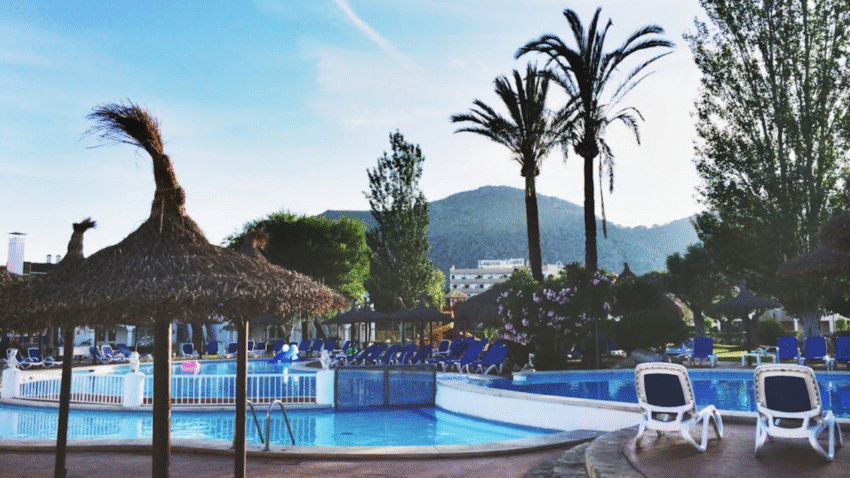Introduction
Your backyard pool is a place to relax and recharge—but it can also be a major energy consumer. If you’re looking to reduce your utility bills and lower your environmental impact, this guide will show you how to make your pool energy-efficient and eco-friendly. From smart upgrades to daily habits, you’ll discover simple ways to save money while going green.
Why Pool Energy Efficiency and Eco-Friendliness Matter
Swimming pools use a significant amount of energy and water, especially in warmer climates or during high-usage seasons. Traditional equipment and wasteful habits not only cost more over time—they also impact the environment through higher carbon emissions, chemical runoff, and water waste.
By making your pool more sustainable, you:
- Reduce energy and water bills
- Lower greenhouse gas emissions
- Extend the life of your pool equipment
- Make your pool safer and more enjoyable
- Add long-term value to your property
Step-by-Step Guide to Making Your Pool Energy-Efficient and Eco-Friendly
Step 1: Switch to a Variable-Speed Pool Pump
A variable-speed pump (VSP) is one of the best upgrades you can make.
- Traditional single-speed pumps run at full power all the time, wasting electricity.
- VSPs adjust their speed based on the task—low for filtration, higher for vacuuming.
- They can cut energy use by up to 80%, often saving hundreds per year.
Pool Owner Tip: Look for ENERGY STAR® certified models for maximum efficiency and rebates.
Step 2: Use a Pool Cover
A pool cover is a simple and highly effective tool to reduce energy and water loss.
Benefits include:
- Reduces evaporation by up to 95%
- Retains heat, reducing the need to run heaters
- Keeps debris out, lowering chemical use and filter wear
- Prevents algae growth by limiting sunlight exposure
Types of covers:
- Solar covers – Use the sun’s heat to warm the pool
- Safety covers – Durable and protective, ideal for long-term closure
- Automatic covers – Convenient, though more expensive
Tip: Always cover your pool at night or during extended non-use periods.
Step 3: Upgrade to LED Pool Lighting
LED lights use a fraction of the electricity of traditional halogen or incandescent bulbs and last much longer.
- Use up to 85% less energy
- Lasts 25,000–50,000 hours
- Available in multi-color and programmable options for ambiance
- Run cooler and are safer to use around water
Bonus Hack: Install motion sensors or timers to reduce runtime when lights aren’t needed.
Step 4: Optimize Your Filtration Schedule
Your pump doesn’t need to run 24/7.
- Run your pool filter for 6–10 hours daily, depending on pool usage and climate
- Break run time into two cycles—morning and evening—for better circulation
- Use timers or automation systems to manage the schedule efficiently
Caution: Over-filtration wastes energy, while under-filtration risks water quality. Find the right balance.
Step 5: Switch to a Solar Pool Heater or Heat Pump
Heating your pool can account for up to 70% of energy usage in some pools. Consider greener alternatives:
- Solar heaters – Use roof or ground-mounted solar panels to circulate and warm water
- Heat pumps – Capture ambient air heat, making them efficient even in mild climates
- Avoid gas heaters if energy efficiency and emissions are your concern
Pool Owner Tip: Use a solar cover in combination with solar heating to reduce heating times.
Step 6: Use Eco-Friendly Pool Chemicals
Traditional pool chemicals can be harsh on the environment. Consider alternatives that are just as effective:
- Mineral-based sanitizers reduce chlorine use by up to 50%
- Saltwater chlorination creates chlorine from salt, reducing harsh chemical handling
- Enzyme-based cleaners break down organic waste naturally
- Phosphate removers prevent algae growth with fewer chemicals
Note: Always follow local laws and proper dosage instructions when using any chemical treatment.
Step 7: Minimize Water Waste
Water conservation is just as important as energy use.
- Fix leaks quickly—a 1 mm leak can waste over 1,000 gallons per day
- Backwash filters only when necessary
- Reuse backwash or splash-out water for lawn irrigation if safe
- Use splash mats or install water-level regulators to avoid overflows
Bonus Hack: Lower water levels slightly to reduce evaporation and splash loss.
Common Mistakes to Avoid
1. Oversizing Pool Equipment
Bigger pumps or heaters aren’t always better—they use more energy than necessary. Match equipment size to your pool’s needs.
2. Running the Pump Too Long
Leaving your pump on all day wastes power. Stick to a planned, optimized schedule.
3. Skipping Cover Use
Many owners skip using their pool cover—but it’s one of the easiest ways to cut water and heat loss.
4. Ignoring Small Leaks
Tiny leaks add up fast. A slow drip can mean thousands of gallons wasted each season.
5. Overusing Chlorine
More chemicals aren’t always better. Overuse leads to unnecessary water dumping and environmental harm.
Extra Tips & Pool Hacks
1. Invest in a Pool Automation System
Smart pool systems can monitor chemical levels, control pumps, and adjust settings automatically—saving energy and maintaining balance.
2. Add Shade Structures
A shade sail or pergola over part of the pool reduces UV exposure, limits evaporation, and helps maintain cooler water.
3. Collect Rainwater for Landscaping
If you use pool-safe landscaping, collect rainwater from the pool area to water plants and grass around the yard.
Bonus Link:
Want to learn how to organize your pool upkeep like a pro? [Check out our guide on how to organize a pool safety checklist.]
Conclusion
Making your pool energy-efficient and eco-friendly doesn’t require a full remodel. With smart upgrades like a variable-speed pump, solar heating, LED lights, and consistent cover use, you can dramatically reduce your energy and water usage while maintaining a beautiful, refreshing backyard oasis.
Final Tip: Start with one or two changes and build from there—every small step makes a big difference over time.
